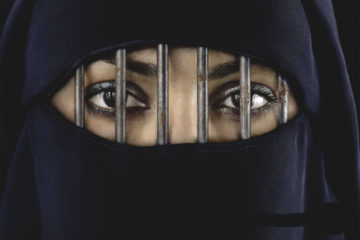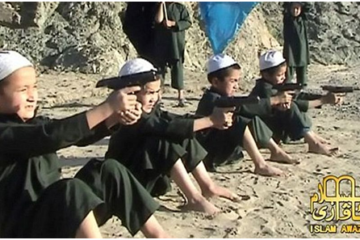Any religion other than Islam is not acceptable Koran 3:8
All of life is a dispute over taste and tasting Friedrich Nietzsche
Terrorism is a highly complex and extreme behavior, and it’s not possible to stop it. The exact circumstances that shape terrorism are not fully understood yet. Terrorism in the Western world, and particularly Islamist terrorism, is usually discussed within the context of religion, politics and society. I have different approach. I try to understand terrorism from an aesthetic point of view. That might cause raised eyebrows since aesthetics is defined traditionally as the theory of beauty, or more broadly as that together with theories of art, creativity and culture. To bring such things together with blood splattered victims of terrorist attacks must admittedly appear at first sight as weird. But just because I have a different path doesn’t mean I’m lost.
The big question, to start with, is how human consciousness is constructed that finds the ultimate meaning of life by planning to kill as many people as possible, and in the shortest possible period of time. By dealing with this question as an aesthetician I came very soon to think about the difference between beauty and ugliness. Very generally speaking one can safely say that beauty is related to the pleasant aspects of life whereas ugliness is causing disgust or distaste. Therefore, it’s in the nature of the sake that we love beauty and hate ugliness. Besides, the greatest ugliness causing the biggest disgust or distaste is death. And that’s exactly what terrorists are good at to produce. I’ll come back to this aspect. The fashion designer Karl Lagerfeld confessed in an interview: “I’m surrounded by young and beautiful people. I hate looking at ugliness.”

That’s okay. Lagerfeld lives in a free society. No one is forcing him or us to look at ugliness. We can wear the same kind of dark sunglasses like him in order not to see it. But that’s only one side of the coin. The other side is more complicated and full of theoretical difficulties. It’s because there is no such thing as beauty or ugliness in itself. It’s always a matter of judgment, and aesthetic judgments have neither truth nor validity.
What is beautiful and lovable for you can be ugly and hateful for someone else. It depends on the way our mind is used to construct aesthetic judgments. Very simplified said, I could not have an eye for the beauty of Lagerfeld’s young entourage if my aesthetic judgment would be dimmed by an “ugly” mind. This entails a problematic social consequence. If Lagerfeld in his “beautiful” mind hates to look at ugliness, then it is logical that individuals with an “ugly” mind hate to look at guys like him and the supposedly “beautiful” people in his social neighborhood. And this implies aggression, conflict, and violence.
The genius musician Frank Zappa produced once a both humorous and intelligent threat towards “beautiful” people. “I have an important message to deliver to all the cute people all over the world. If you’re out there and you’re cute, maybe you’re beautiful. I just want to tell you something – there’s more of us UGLY MOTHERFUCKERS than you are, hey-y, so watch out.”
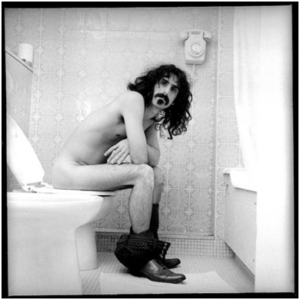
This message was expressed within Zappa’s worldview against the political and social establishment. And, as we know, the establishment in the Western World had good reasons “to watch out” a generation gradually turning society during the late 60s upside down. Zappa meant that rebellious youngsters, the “ugly motherfuckers” are outnumbering the establishment and, consequently, being able to send all “beautiful” people to hell.
I would like to put Zappa’s words in a completely different context. Let’s visit for a short moment one of the regions in the Islamic world where none of us would like to go for vacation. Suppose there’s the mandatory mosque attendance for Friday prayer. We hear the Imam shouting triumphantly during his hate sermon that: “very soon there’ll be many more of us than them!”
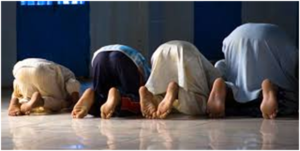
The Imam is right. Muslims are a fast growing population, and the only group of people growing faster than the world’s population. There were 150 million Muslims in the year 1900, and only hundred years later already 1.2 billion. By 2050, there’ll be 2.76 billion Muslims. What is even more interesting within this demographic context is the fact that Muslims are a male dominated population.
Statistics show that every father in the Islamic world has approximately three sons in the age between 13 and 28 years old. This means that the Islamic world is a population of male adolescents. Additionally, Islam with its inherent misogynistic traditions is a strict patriarchy where economic and political leadership is in the hands of a few. Aside from resources like oil and gas, most Muslims live in poverty and lack any economic progress.
And a variety of static societal structures makes it impossible for the Islamic world to move forward towards modernity. Significantly, it is not possible to see how the Islamic world could contribute anything to the rest of the world in terms of entrepreneurial activities, technology, science, culture or art.
When we heard the Imam shouting: “very soon there’ll be many more of us than them” he was unintentionally, but nevertheless correctly, referring to Muslims as hopeless male adolescents belonging to a rapidly growing sub-proletariat. All the young Muslim dudes we can see in the mosque have three things in common. In addition to their testosterone overflow they have to experience unemployment and hopelessness with regard to personal success.
The hate sermon of the Imam is therefore only an additional gasoline in a fire already burning. It might sound harsh, but the terrible truth from an economic point of view is that the vast majority of all young male Muslims are completely redundant. They don’t have a future. There is only one career opportunity for them. The only thing they can do is to prepare themselves as soon as possible for their participation in one of the many armed conflicts in the Islamic world.
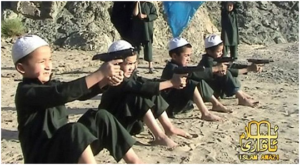
These resentful adolescents make aesthetic judgments within the framework of their own worldview. And these judgments can’t be to our liking. For them, all of us are nothing but “ugly motherfuckers” who better watch out. And is this not exactly what we are doing when it comes to Islamist terrorism.
I now come to a point which might be very difficult to digest.
Trying to understand Islamist terrorism from an aesthetic point of view requires a different way to look at Muslims and at religion in general. We are used to see Islam as one of the three monotheistic religions. But, and here comes the difficult bite; religions do not exist at all.
In the following I want to point out that what we falsely label as religions is something different. So called religions are not based on faith but primarily on taste. What is taste? Taste is expressing the way we make contact with the world. What we wear, for instance, indicates how we want to be recognized by rest the world. Taste is necessarily something which precedes thought or value-judgment.
This means that faith in a particular God is always based on a particular taste for the supposedly divine. And a collective taste, necessarily, is always mirrored in a particular collective style. Since I can’t get into a detailed discussion here about taste, style, and Islam, I have to cut a long story short, and express it in just one statement:
ISLAM IS A TOTALITARIAN STYLE MOVEMENT
Everything related to Islamic taste such as the architecture of mosques, the Koran, dietarian rules, methods of punishment, misogyny, terrorist attacks, dressing codes, etc. are nothing but stylistic devices within the unity of an Islamic style consciousness.
It is in the nature of the sake that every particular stylistic consciousness is vehemently opposed to any kind of stylistic “inconsistencies”. The consequences are at hands if one takes into consideration that the world you and me live in is viewed as unacceptable within the Islamic style consciousness. And one should not overlook the fact that the adolescent Islamist sub-proletariat is growing up in a style movement without fashion.
Fashion is, as I have pointed out in my previous blog, a way to express individual differentiation. And to be different from others in terms of clothing is, logically, opposed to style. Every style is a unification of its particular stylistic devices. Therefore, the expression “personal style” is a contradiction in terms. There is no individual differentiation when it comes to clothing preferences in the Islamic world. On the contrary, the totalitarian Islamic style movement is demanding from all Muslims unconditional style obedience. This is something all totalitarian style movements like communism and fascism have in common.
This means that fashion, in the way it exists in our world, is something totally unacceptable within the horizon of the Islamic style movement.

If we agree upon that aesthetic judgment is relative; if we accept that something you consider as beautiful and loveable can be ugly and hateful for someone else, then we also have to realize that the for us “beautiful” model in her red dress is nothing but an “ugly piece of shit” within the aesthetic judgment of Islamic style consciousness.
Besides, “shit” in its literal and metaphorical meaning is an enormously underestimated aspect in aesthetics. Logically, the obsession with beauty throughout history is not thinkable without the existence of shit as its ultimate opposite. The beauty of paradise, for instance, is surely one of the most successful counter-projects to shit. Significantly, in all the paradises we know; there is no need to defecate.
The insurmountable aversion against shit always justifies in one or the other way the termination of its ugliness. Therefore one can see Islamist terrorist attacks as a stylistic device aimed to kill unacceptably “shitty” looking people propagating an aesthetic judgment radically opposed to Islamist style consciousness. Islamist Terrorists appear in this view as deadly cleaning squads. Their “Allahu Akbar” is linguistically misleading. What they really shout is, “we’ll kill you ‘cause you’re so fucking ugly!”
Shortly after every terrorist attack the usual response reads like this. “We are all profoundly shocked by this tragedy. Our thoughts and prayers go to the victims, their families, their loved ones. This attack is an attack against our way of life, against our values, against liberty, and against humanity. The most appropriate attitude is to continue living normally, by showing courage, solidarity and vigilance…etc. etc.” Not only are such words provocatively empty and worn out by now. They express a kind of helplessness similar to the one when earthquakes or storms have caused disaster and death.But terrorist attacks are not natural catastrophes.They are always a successful outcome of the will to kill. I think it’s helpful to differentiate between two types of terrorism.
Domestic Lone Wolf Terrorism
The term “lone wolf” (perhaps ‘stray dog’ would be a better word) is used to refer to individuals undertaking acts of terrorism outside a command structure. It’s not possible to gather intelligence on them since they act on their own. It always turns out that lone wolves, like many serial killers, have been the more or less normal guy from next door. Generally, history is littered with events in which “ordinary” people behave in bizarre, irrational, and terrifying ways.
On the afternoon of July 22 2011, Anders Breivik, a 32 year old Norwegian, blow up a government building in Oslo. While the images of the attack, which killed eight people were being broadcast, he headed to the small island of Utöya. There he shot and killed in a massacre that lasted for more than one hour 69 youngsters, who had gathered there in an annual summer camp.
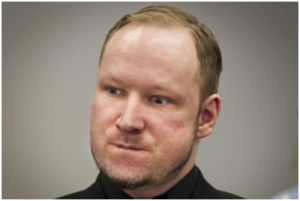
The man claims to be a racist. But whatever he thinks about himself is irrelevant since the only thing he wanted to do was to kill as many people as possible. And that makes him a terrorist.
On 24 March 2015, an Airbus A320 on a flight from Spain to Germany crashed in the French Alp. The crash which killed all 156 people on board was deliberately caused by co-pilot Andreas Lubitz. Shortly after reaching cruise altitude and while the captain was momentarily out of cockpit, Lubitz locked the cockpit door and initiated a descent which lasted for ten minutes until the aircraft crashed. This was not a “normal” murder suicide by pilot which happens from time to time. Every pilot can bring down an aircraft in just a moment by initiating an uncontrollable sharp turn. But Lubitz, and this aspect is missing in all the reports, did something else. The man leaned comfortably back in his seat, ignored happily the desperate banging on the cockpit door and enjoyed during ten minutes the terrible screaming of panicking passengers.

And enjoying killing all people on board makes him regardless of the mental problems he might have had a domestic lone wolf terrorist.
On the night of October 1, 2017 Stephen Paddock opened fire from his hotel suite in Las Vegas on a large crowd of concertgoers killing 58 people and wounding 459 others.
Paddock had brought no less than 23 AR-15 style and AK-47 style rifles to his suite. Some of the weapons were outfitted with so called bump fire stocks, allowing fully automatic gun fire as long the trigger is pressed. Mass shootings, as such cases are called in a belittling way, have become a saddening normalcy. Needless to say that acts of lone wolf terrorism and male psychology are intrinsically linked.

Movies are an effective instrument by which we can examine contemporary male psychology. One of the most successful attempts of portraying a modern mans bizarre psyche on film is Martin Scorsese’s ‘Taxi Driver’. The story revolves around Travis Bickle, (De Niro) an alienated young ex marine working as a taxi driver. One follows step by step his realistically captured lonely existence into an outburst of violent insanity.
The fact that Travis Bickle’s isolated lifestyle, the loneliness in front of his TV, and his hurt emotions are shared by many man is certainly uncomfortable. It is to my understanding a bizarre-disastrous male psychology in combination with free access to guns which turns seemingly normal guy’s like Travis Bickle into loose cannons.
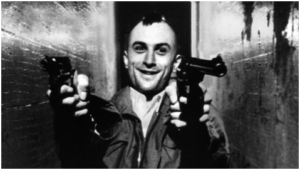
There is one single sentence in the film illuminating the crowing lone wolf psychology. At some point Travis says: “I do not believe one should devote to morbid self-attention. I believe one should try to become a person, like other people.”
That sounds like something one could agree upon. The question here is, however, in which way lone wolves want to become like other people. The lone wolf way for unification with others is based on the following reasoning: Since everything in my life is irreversibly fucked up by now, and knowing perfectly well that I’ll get killed after my terrorist attack in a hail of bullets, I nevertheless will become exactly like all the people I have killed when lying blood splattered among them on the floor.
To be continued…

